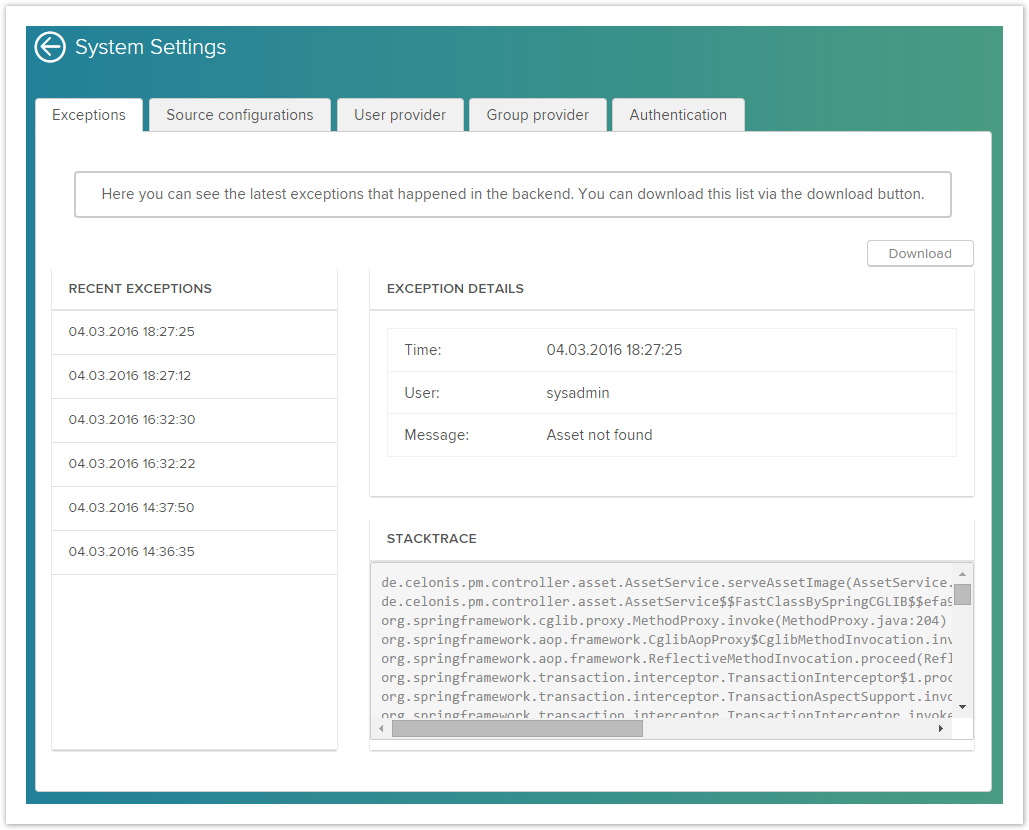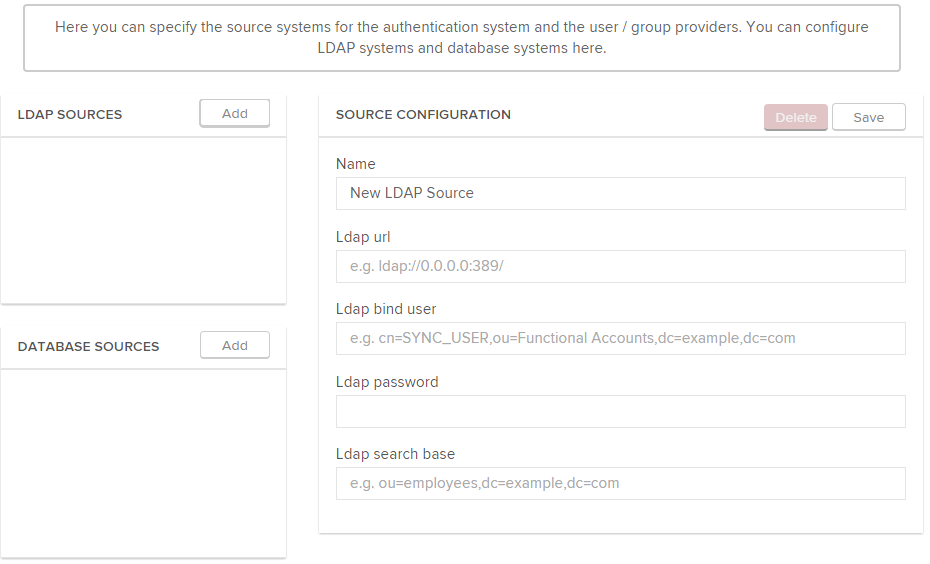System Administrator Only!
Please note that the system settings can only be accessed by the System Administrator!
In the system settings you can view and edit the following tabs:
1) Exceptions - see the latest exceptions that happened in the backend
2) Source configurations - specify the source systems for the authentication system and the user / group providers.
3) User provider - for user synchronization with a database/LDAP systems
4) Group provider- for group synchronization with a database/LDAP systems
5) Authentication - specify used authentication systems
6) Mail - settings for story distribution
7) CPML - basis connection from SAP Process Mining by Celonis to the HANA AFL plugin (CPML)
You can find more information in the respective subsections.
1) Exceptions
In the exceptions tap, you can view all exceptions that occurred in the backend in the past. you can view up to 50 exceptions and they are stored for 14 days.This helps the admin to analyse irregularities and perform user troubleshooting.
The exception details give a quick overview of the time, user and exception message, e.g. "Passwords do not match". You can also download the summary as .txt-file for further analyses e.g. for attaching it to a bug report.
Here is an example of the exception view:
2) Source configurations
Here you can specify the source systems for the authentication system and the user / group providers. You can configure LDAP systems and database systems by clicking on the - button.
To implement a source, you need to select a name, url, username, password and search base/ driverclassname:
3) User provider
Here you can configure the user providers if you want to use user synchronization. You can again choose between a database table or a LDAP system as source.
4) Group provider
Here you can configure the group providers if you want to use group synchronization. You can again choose between a database table or a LDAP system as source.
5) Authentication
Here you can specify the used authentication systems. Supported methods are LDAP and HTTP-Header. To use them, you have to configure user providers and - if you want to use LDAP - a LDAP source in the source configuration model.


